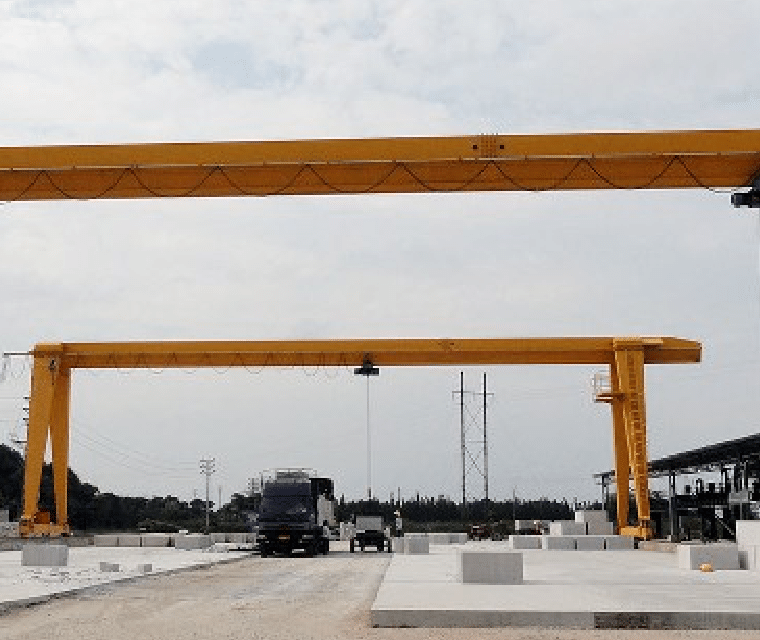In a factory setting, Electrical Chain Hoists certainly are a must-have. Great for providing vertical lifts, electric chain hoists are pretty straight forward as well as simple to operate. As a result them a nice-looking alternative for business owners.

However, what is not easy could be the task of selecting the proper hoist to your requirements. The market industry happens to be flooded having a large number of products, a few of which are subpar offerings. Wonderful manufacturers claiming the top spot, it could become tough to settle on the most appropriate one.
That's why, to make sure that that you do not get it wrong, we've gone ahead and compiled this complete help guide to choosing electric chain hoists for your use. After you go through the guide below, you will have little difficulty understanding which product you should purchase.
But let's start at the beginning and make things right on which an electrical Chain Hoist is.
What is a power Chain Hoist?
Put simply, an electric chain hoist is a device that's utilized for vertically lifting and lowering any materials. The hoist contains an electric motor which has a brake, Gearbox, Load Chain wheel as well as a controller, that happen to be employed to control the motions with the system. The lifting element used is the Alloy Steel Chain.
These kind of hoists are excellent in factories and machine shops, which require fast lifting and loading items.
Things to consider in choosing Electric Chain Hoists
Deciding on the best chain hoist is among the essential prerequisites for a safe and efficient workshop environment. Are mainly many of the key factors that really must be considered when choosing the correct product.
The extra weight with the load: This is the first and a lot important factor that you need to consider when scouting for electric chain hoists. The stress that you will be lifting will determine the type of hoist you will want to buy. Typically of thumb, for less than ten a lot of lifting capacity, a sequence hoist is preferred. However, for lifting greater weights, a power wire hoist would work. But this doesn't hold rich in lifting height. So, depending on your industry requirements and needs, a choice of hoists will vary.
Application Requirement: When you've determined the load type, you'll want to determine the application form this agreement you may be putting the hoist. Ask yourself this: Can you put it on for product assembly? If that's the case, then extreme precision can be a prerequisite. Also essential would be to know whether you're using any devices under the hook. Or what are your duty cycles?
Lifting Speed: Another key to consider may be the lifting speed, which must be carefully calibrated for the proper loading and unloading from the materials being lifted.
The job Environment: Perhaps more vital than lift speed may be the environment where your hoist will be used. Factory environments may be abrasive for machinery, and it's really necessary to understand the impact how the workplace will have on the equipment. By way of example, when the hoist can be used in extremely high-temperature environments, this may cause gearbox leakage and related hoist malfunctions. Similarly, shallow temperatures might cause cracks to develop or internal components to freeze. Setting where you can find extreme temperature swings may also be detrimental on the operation of your respective hoist. Frequent temperature changes can lead to electrical short circuits and associated equipment malfunction.
The obligation Cycle: Therefore enough time that your hoist will be used. The number of hours that the hoist will operate at a time may affect the robustness of the equipment. The length of the obligation cycle is important as electrical hoists should dissipate heat through the motors. Therefore they ought to be given sufficient downtime to cool and recover. Otherwise, you could you should be inviting equipment malfunctions.
The Height From the Lift: The height which you should lift the stress also plays an essential part in the choice of the hoist. Usually, electric chain hoists have a container where the excess chain is spooled. Naturally, the greater the height, the longer the chain, which means a bigger chain container. Or else designed properly, a too-large container may possibly work as an obstruction for the load being lifted. An electric powered Chain hoist is a preferred option for higher lifting height, e.g. windmill hoist for turbine maintenance.
The electricity Source: The sort of hoist you're looking for may also determine the power source you will want to use. For low-duty cycle applications, a single-phase hoist is plenty. If, however, you'll need extremely high-duty cycles, it's best to buy a three-phase hoist. This will make certain you plenty of power for your machine's operation.
Warranty: As much as machines go, a hoist is one of the ones that undergo the most common damage. Hence, to prevent repair costs, you should get a merchandise that has attractive warranty features. Make sure that the hoist warranty covers all essential parts and labour. Usually, labour is more costly than parts, so it will be best should your warranty comes with both included.
Precautionary features: After the morning, an electrical hoist can be a machine. Along with any setting where electrical equipment is being utilized, accidents may appear. That's why, when purchasing the hoist, ensure they have all safety features, including load limiters. Important too are self-adjusting brakes and thermal overload protection.
To learn more about Overhead Cranes you can check our new web portal
